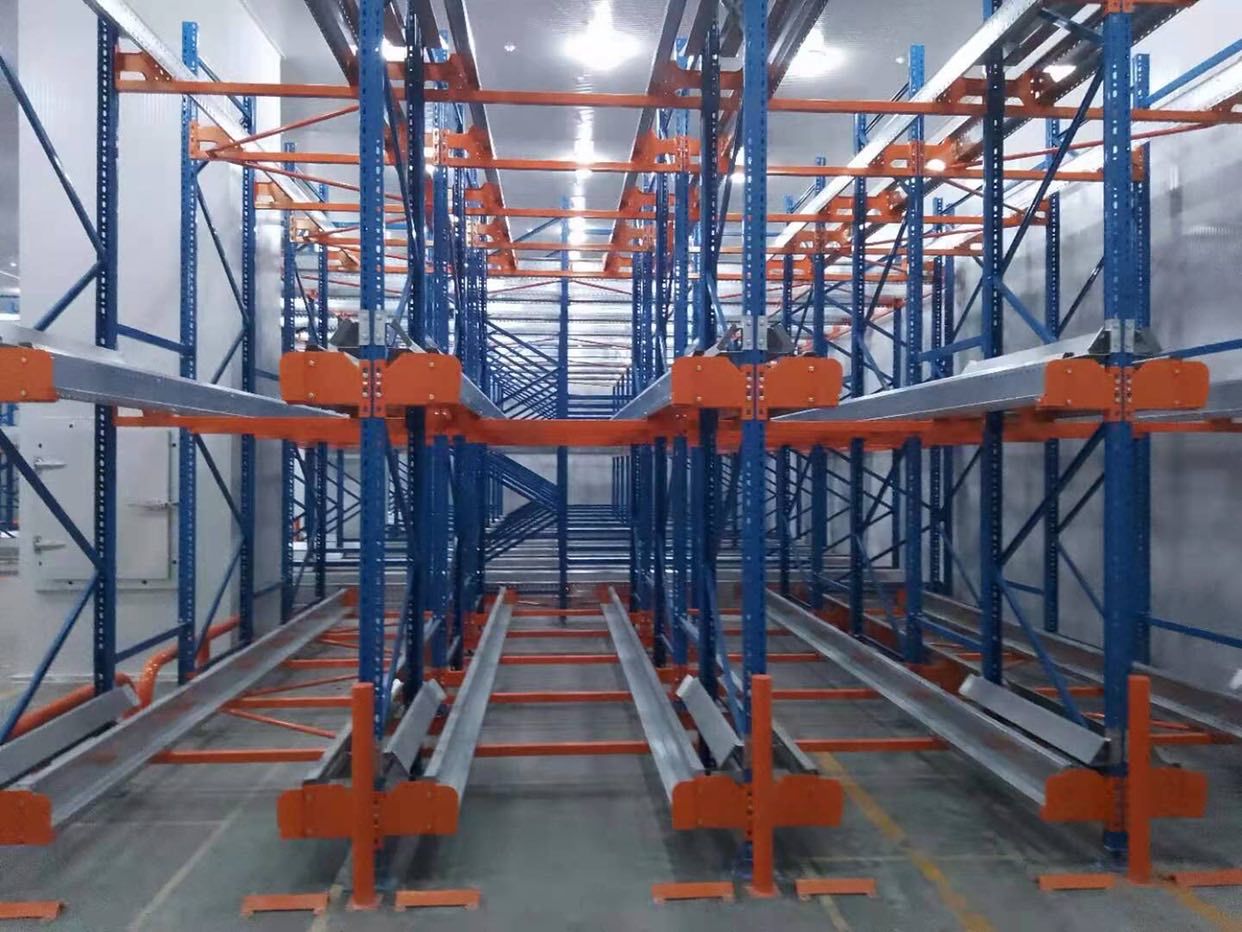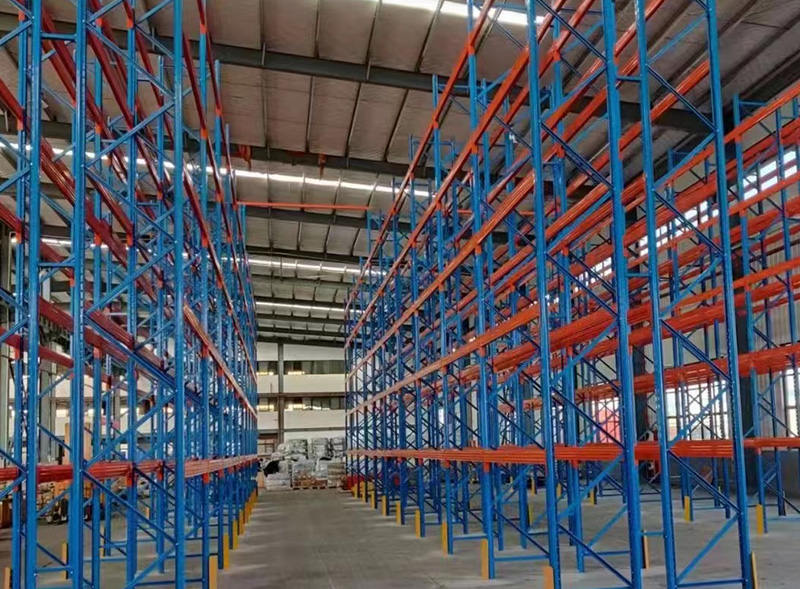The relentless pursuit of efficiency, accuracy, and cost reduction in logistics and supply chain management has propelled warehouse automation to the forefront. At the heart of this transformation lies automated racking, a sophisticated solution moving far beyond traditional static shelving. Automated racking systems integrate robotics, software, and advanced storage structures to create dynamic, high-density warehouses capable of unprecedented throughput and space utilization. This article delves deep into the world of automated racking, exploring its core principles, key benefits, diverse types, implementation considerations, and its undeniable role in shaping the future of warehousing.

What is Automated Racking? (Beyond Static Shelves)
At its essence, automated racking refers to storage systems where the movement of goods (pallets, totes, cases) within the rack structure is performed by automated machinery, guided by sophisticated Warehouse Control Systems (WCS) and Warehouse Management Systems (WMS). Unlike conventional racking where human-operated forklifts navigate aisles, automated racking minimizes or eliminates the need for personnel within the storage aisles themselves. Goods are delivered to and retrieved from designated input/output (I/O) points, and the system handles the intricate task of storing and retrieving items from potentially very deep or high locations with precision and speed. The defining characteristic is the integration of the storage structure with the automated handling equipment.
Core Components and How Automated Racking Works
Understanding the mechanics reveals the power of automated racking:
The Racking Structure: This is the physical framework, often much taller and deeper than conventional racking. Designs vary significantly depending on the system type (see below), but all are engineered to integrate seamlessly with the automated machinery. Common features include guide rails for shuttles and extremely precise tolerances.
Automated Handling Machinery: This is the "muscle" of the system. Examples include:
Mini-Load AS/RS Cranes: For totes and small cases, operating within narrow aisles of the rack structure.
Unit-Load AS/RS Cranes: For pallets, moving vertically and horizontally within the rack framework.
Pallet Shuttles: Battery-powered vehicles that travel within the storage lanes of deep racking systems (like Pallet Shuttle or Drive-In systems), moving pallets to the front or back.
Robotic Shuttles: Similar to pallet shuttles but often more advanced, capable of moving bi-directionally within lanes and sometimes transferring between levels.
Conveyor Systems: Integrated to transport goods to and from the I/O points and sometimes within the racking itself.
Warehouse Control System (WCS) & Warehouse Management System (WMS): The "brain" of the operation. The WMS manages inventory, orders, and overall warehouse processes. It communicates with the WCS, which directly controls the automated machinery – issuing commands for storage, retrieval, sequencing, and optimizing movements in real-time. This software layer is crucial for maximizing efficiency and throughput.
Input/Output (I/O) Stations: Designated points where goods are inducted into the automated racking system by operators or other automation (like AMRs), and where retrieved goods are presented for picking or dispatch.
The process typically involves: An operator or upstream automation places a load at the I/O point. The WMS/WCS identifies the optimal storage location based on factors like SKU velocity, stock rotation (FIFO/FILO), and available space. The automated machinery (crane, shuttle, etc.) is directed to pick up the load and transport it precisely to the designated location within the rack structure. For retrieval, the WMS processes an order, directs the machinery to the correct location to retrieve the required item(s), and brings it to an I/O point for operator handling or further automated sorting.

Key Advantages: Why Invest in Automated Racking?
The shift towards automated racking is driven by compelling advantages across multiple dimensions:
Massively Increased Storage Density: This is often the primary driver. Automated racking systems like Pallet Shuttle, AS/RS, and Cube Storage can utilize building height much more effectively (up to 40m+), eliminate traditional forklift aisles (creating very narrow or aisle-less designs), and enable deep lane storage (10+ pallets deep). This can double or even triple storage capacity within the same warehouse footprint.
Enhanced Operational Efficiency & Throughput: Automation enables significantly faster storage and retrieval cycles compared to manual operations. Machines work 24/7 without fatigue, handle goods consistently at high speeds, and optimize travel paths. Order picking accuracy also dramatically improves, reducing costly errors and returns.
Improved Safety: Removing forklifts and personnel from storage aisles drastically reduces the risk of accidents like collisions, rack damage, and falling loads. Operators work at ergonomic I/O stations, minimizing physical strain and injury risk.
Optimized Labor Utilization: Automated racking reduces the need for labor-intensive tasks like driving forklifts long distances in aisles. Staff can be redeployed to higher-value activities such as quality control, value-added services (kitting, assembly), order consolidation, or managing the automation itself. This is crucial in tight labor markets.
Superior Inventory Control & Traceability: Integration with WMS/WCS provides real-time, highly accurate inventory visibility. Every movement is tracked, enabling precise stock levels, location accuracy, and robust traceability for compliance (e.g., FIFO for perishables, serial number tracking).
Reduced Product Damage: Automated handling is precise and consistent, minimizing the bumps, drops, and improper handling often associated with manual forklift operations. Goods are stored and retrieved gently according to programmed parameters.
Energy Efficiency & Sustainability: Optimized movements and reduced need for extensive forklift fleets (and their emissions, especially in the case of diesel) lower energy consumption. Higher density also means potentially needing less warehouse space overall, reducing construction materials and ongoing heating/cooling needs.
Exploring the Landscape: Types of Automated Racking Systems
The term "automated racking" encompasses several distinct system types, each suited to specific applications:
Automated Storage and Retrieval Systems (AS/RS):
Unit-Load AS/RS: Designed for pallet handling. Cranes operate within the rack structure aisles, storing and retrieving pallets at great heights and depths with high precision and speed. Ideal for high-volume warehouses with large SKU counts.
Mini-Load AS/RS: Designed for smaller loads like totes, trays, or cartons. Cranes retrieve individual items or entire totes, often integrated with conveyor systems for sortation and order fulfillment. Essential for e-commerce and piece-picking operations.
Shuttle-Based AS/RS: Utilizes autonomous shuttles that travel within the rack levels. A crane or lift delivers the shuttle to a specific level, and the shuttle then moves horizontally within the lane to store or retrieve pallets or totes. Excellent for high-density buffer storage and deep-lane applications.
Automated Pallet Shuttle Systems: This system uses remotely controlled or battery-powered shuttles that operate within the storage lanes of deep static racking (like Drive-In or Pallet Flow racking, but automated). The shuttle is placed into a lane by a forklift (or sometimes automatically via transfer cars) at the I/O point. It then travels down the lane, lifting and placing pallets at the desired location. Enables very deep storage (FIFO or FILO) with much faster put-away and retrieval than manual Drive-In, while improving safety. A key automated racking solution for dense pallet storage without the full cost of AS/RS.
Cube Storage Automated Systems (Autonomous Mobile Robots - AMRs in Racks): This emerging technology utilizes small, autonomous mobile robots that move in three dimensions within a grid-like structure. Robots travel on top of the grid, descend into storage locations, retrieve inventory containers (totes, cartons), and bring them to the perimeter for operators. Offers extreme flexibility, modularity, and high density for small-item storage, particularly in micro-fulfillment centers (MFCs) servicing e-commerce.
Vertical Lift Modules (VLMs) & Horizontal Carousels: While sometimes considered distinct from aisle-based automated racking, these are automated storage solutions. VLMs consist of vertically arranged trays retrieved by an automated inserter. Carousels rotate horizontally to bring bins/totes to an operator. Both maximize floor space and improve picking efficiency for small parts, often integrated into larger automated workflows.
Implementation Considerations: Navigating the Path to Automation
Implementing automated racking is a significant investment requiring careful planning:
Thorough Needs Analysis & Feasibility Study: Define clear objectives (increased density, faster throughput, labor reduction?). Analyze current operations (SKU profiles, inventory levels, order patterns, peak demands). Calculate potential ROI meticulously. Assess building suitability (floor flatness, column spacing, ceiling height, floor loading capacity, power supply).
System Selection & Vendor Partnership: Choose the automated racking type that best aligns with your specific operational needs, product characteristics (weight, dimensions, fragility), and budget. Partner with experienced, reputable system integrators who understand both the technology and warehouse operations.
Integration is Paramount: Seamless integration between the WMS, WCS, the automated racking system, and any upstream/downstream automation (conveyors, AMRs, sorters) is critical for achieving the promised benefits. Ensure the software stack is robust and capable.
Change Management & Workforce Training: Automation changes workflows significantly. Proactive change management and comprehensive training for staff who will operate, maintain, and work alongside the new system are essential for smooth adoption and maximizing ROI. Emphasize new roles and opportunities.
Total Cost of Ownership (TCO): Look beyond the initial capital expenditure. Consider ongoing costs: maintenance contracts, software licensing, potential energy consumption changes, spare parts, and the need for specialized technical staff. Automated racking requires reliable, planned maintenance.
Scalability & Future-Proofing: Design the system with future growth in mind. Can it be easily expanded? How adaptable is it to changing business needs or new technologies? Choose modular solutions where possible.
The Future of Warehousing: Automated Racking as the Foundation
Automated racking is not just a trend; it's becoming the cornerstone of modern, competitive logistics operations. As technology advances, we can expect:
Increased Intelligence: AI and machine learning will further optimize storage strategies, predict maintenance needs, and dynamically adapt to real-time demand fluctuations within automated racking systems.
Greater Flexibility & Modularity: Systems will become easier to reconfigure and scale, adapting quickly to changing product lines or business models. Technologies like cube storage exemplify this.
Enhanced Robotics: More dexterous and faster robots will handle a wider variety of items within automated racking structures.
Deeper Integration with IoT: Sensors throughout the racking and machinery will provide unprecedented data on performance, environmental conditions, and inventory status, feeding into predictive analytics.
Rise of "Lights-Out" Warehousing: Highly automated facilities, powered by automated racking, robotics, and AI, will operate with minimal human intervention, especially during off-hours.
Automated racking represents a quantum leap in warehouse technology, offering transformative benefits in density, efficiency, safety, accuracy, and labor optimization. From high-speed AS/RS cranes and dense pallet shuttle systems to flexible robotic cube storage, the options are diverse and continually evolving. While the investment is substantial and implementation requires careful planning, the long-term returns in operational performance, cost savings, and competitive advantage are compelling. As supply chains face increasing pressure for speed and resilience, automated racking is no longer a luxury but a strategic imperative for businesses aiming to thrive in the future of logistics. Embracing this technology lays the foundation for smarter, faster, and more responsive warehouses.







